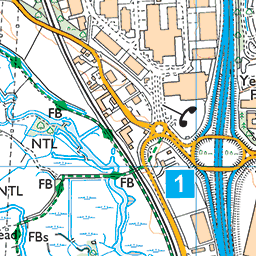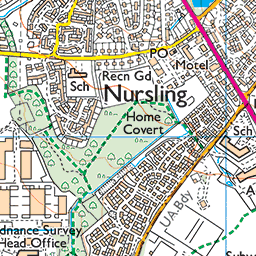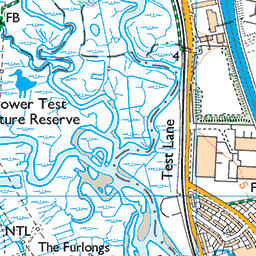King Charles III England Coast Path - North West Map and Trail Information
See the map and find answers to the most common questions about the Trail below
The King Charles III England Coast Path in the North West offers fabulous coastal walking through historical landscapes. Visit Roman sites, nature reserves, museums then relax in cosy pubs and tea rooms.
Use the Map Filter to see places to visit and where to stay along the King Charles III England Coast Path. View information on the map by ticking the boxes in the Map Filter.
Added to your Itinerary Planner below
Distance calculator
Customise your trip with our filters.

Toggle between the options below to show available markers.
General info Equestrian Info Cycling InfoAccommodation
Points of interest
Services
Routes
Accommodation
Points of interest
Transport
Accommodation
Points of interest
Transport


















The custom route elevation is created when you use the distance calculator (above) to draw a line.

Please be aware that the elevation profile displayed above does not accurately reflect the trail in this area.
The profile will be accurate once the trail is fully open.
Select the blue arrow tabs below for more details.
It’s long … really long. It’ll be around 2,700 miles long when it is complete.
Check out which parts of the King Charles III England Coast Path in the north west have opened, on the Route Description page .
And don’t forget to ensure you follow any restrictions which will be signed on the ground, but also listed here: CRoW & Coastal Access Map
The King Charles III England Coast Path is being created by dedicated Coastal Access teams within Natural England working closely with the local authorities. Once sections are open responsibility passes to the local highway authority. This is usually the county council, or unitary authority.
To contact the relevant authority visit our King Charles III England Coast Path Contact page.
Diversions can be viewed on the Interactive Map below.
You may find some minor diversions and seasonal or tidal alternatives on the route – please follow instructions on signage as these are for the safety of both walkers and wildlife.
At Ravenglass, please note there are two gaps in the trail, pending developments with estuary crossings in the area.
Irt estuary – between Drigg and Ravenglass
You can use the coastal railway between Drigg and Ravenglass, or existing public rights of way to cross the Irt at Drigg Holme packhorse bridge (although this can flood on very high tides).
Esk estuary – between Ravenglass and Eskmeals
The only crossing of the Esk is via the A595 road bridge, which we consider unsuitable for access on foot. We recommend using the coastal railway between Ravenglass and Bootle (Hycemoor) for the time being.
Don’t be tempted to miss Ravenglass out completely though – check tide times first, and combine the main trail and high tide route to take a circular walk around the village’s scenery, Roman remains and refreshment opportunities.
Tarn Point/Selker
There is a seasonal restriction on dogs accessing a section of the trail near Selker Bay during calving season. Walkers with dogs may use the foreshore or an inland diversion on public rights of way. Signage on the ground will advise when this is in force, but as the inland diversion is lengthy, you may wish to check tide times in advance!
Work continues to make the trails accessible to more people.
Our Access for all page brings together access information about the National Trails including easy access walks and sources of further information.
Visit the page to watch a video of the Maryport to Allonby section. The video highlights parking, path surfacing, accessible toilet provision and suggests some places where you can stop for a rest or picnic lunch.
From early 2022 new accessible signage is being trialled on new stretches of KCIIIECP in the north west. Some of these signs have Braille stickers and QR codes, allowing access to a digital version of sign text for use with mobile phone screen-reading software. You can view these pages in advance here:
Remember to follow the Countryside Code!
The advice on Morecambe Bay Partnership’s website will help you plan ahead for any coastal walk.
Much of the North West Coast is accessible by train.
In many places the train line runs close enough to the coast for you to use it to get back to the start of your walk.
There are also many bus routes calling at coastal locations.
For public transport information and journey planning visit the Traveline website or call them on 0871 200 22 33.
Carlisle Lake District Airport, flying from Belfast, Dublin City and London Southend. It also has a shuttlebus to Carlisle train station.
The King Charles III England Coast Path is open all year but at times there may be restrictions and diversions. Some sections of the King Charles III England Coast Path pass through areas that are very important for wildlife. In these places there may be restrictions such as requirements that dogs are on the lead or even diversions to avoid particularly sensitive sites for periods of time.
The King Charles III England Coast Path passes through private land; in some places land management activities or safety concerns may affect the path.
Please check the website before you set off. All significant diversions are shown on the interactive map below and will be signed on the ground. Significant restrictions will also be shown on Natural England’s CRoW & Coastal Access Maps website.
The King Charles III England Coast Path has been designed to be as accessible as possible with minimal use of barriers such as stiles. However the nature of the coast means that there are steps in places, often long flights of steep steps. In other places the King Charles III England Coast Path may follow paved promenades or other land suitable for wheelchair users, including people using most types of mobility vehicles or people with reduced mobility. Other motor vehicles are not permitted.
Your local authority should be able to advise on which stretches are barrier and step-free.
We have trialled some new accessible signage on more recent stretches. These signs have Braille stickers and QR codes, allowing access to a digital version of sign text for use with mobile phone screen-reading software.
If you prefer to plan ahead, you can view the sign content here for the following two stretches:
Silecroft to Green Road, Cumbria
Tarleton Lock, Lancashire to Pier Head, Liverpool
The King Charles III England Coast Path is being created for walkers. Some sections do follow existing public rights of way and some of these may have bridleway rights. These will be shown as public bridleway on the OS maps. You can ride a horse or a bike on a bridleway. Some sections may also have existing access for horses and cycles, where these rights exist they will be signposted.
No – the King Charles III England Coast Path is a walking route. In some places it may follow quiet country lanes, roads or private tracks for short distances, but it is not designed for use by motor vehicles.
Yes, you are welcome to take your dog. Dogs on the King Charles III England Coast Path must be under effective control. This means the dog must be on a lead or kept within sight and you should be aware of its actions and be confident that the dog will return reliably and promptly when called.
Dogs must be on a short lead in the vicinity of livestock.
At some times of year in some locations, there may be additional restrictions on where dogs can go or where they must be on a short lead. Please obey any signs on the ground. Restrictions on where dogs can go are usually there to protect sensitive wildlife or reduce problems around cattle, and are only in place when absolutely necessary.
There are campsites along the Trail and they can be viewed on the Interactive Map below.
If you plan to camp please note in England and Wales, there are normally no rights for national trail users to wild camp along the way – so seeking the landowner’s permission is recommended.
There are several companies that will arrange to move your bags for you, help you plan your trip, or arrange a full package.
View a list of these here: Trail Holiday Companies.
We recommend that you take a map and/or guidebook with you, or a copy of the walk leaflet if you are doing a shorter walk. You may also find a compass useful.
If you are walking solo you may want to tell somewhere where you are going as there can be mobile black spots along the Trail. Ensure your phone is fully charged before setting off.
Weather in the UK can be changeable so it’s wise to be prepared. You’ll need good footwear, waterproofs and warm layers. Take plenty of water, make sure you pack sun cream and a first aid kit and you may want to consider insect repellent and a tick remover.
Phone reception can be patchy along the Trail, don’t rely on being able to use your phone to help you navigate. Wi-Fi is available at some accommodation and pubs/cafés along the route.
Once open, the King Charles III England Coast Path will be well signed. Look for the National Trail Acorn logo, and/or signs for the King Charles III England Coast Path.
Some sections follow long established coastal walks, and may be signed for these walks. In these areas you will usually be following local signs, but will also see signs telling you that the route is part of the King Charles III England Coast Path.
In most places you don’t have to stick to the path. Land to the seaward side of the trail, shaded pink on Ordnance Survey Maps is Coastal Margin. Much of this land has public access. However, within the Coastal Margin there is land where access rights don’t apply, for example:
Although you have the right to explore away from the path please use common sense – the King Charles III England Coast Path includes land that is steep, unstable and not readily accessible. Just because the maps says you can go there doesn’t mean it is safe to do so.
Saltmarsh and mudflats can be unsuitable to walk on. Where this is the case they will be restricted and have no coastal access rights. You are responsible for your own safety.
You can plan ahead and check the Open Access land here: CRoW & Coastal Access Map.
The English coast doesn’t stay still, some sections change very fast. If part of the King Charles III England Coast Path erodes the local authorities may need to put temporary diversions in place for safety reasons – but they will reinstate the path.
One of the unique features of the legislation that has created the King Charles III England Coast Path is the way it handles coastal erosion. Unlike a public right of way that is lost if the land it is on erodes, the King Charles III England Coast Path will be able to ‘roll back’ to a new position negotiated with land owners.
There may be periods when eroded sections are closed until a new path can be put in place. If that happens diversions will be in place and will be shown on the interactive map below.
If you find a section of erosion without a safe diversion, you can notify the relevant authority here: Contact Trail Managers.
A GPX file can be downloaded from the Create Your Own Trip page (the button is below the map).
Because the King Charles III England Coast Path is opening in sections this causes a few technical problems for the website, which is designed to have a continuous line for each trail. The main issue is with the gradient profile, which can be seen below the main map box.
There is a good choice of accommodation close to the Trail, which can be viewed on the Interactive Map below or on the Create Your Own Trip page. Use the map filters to display different types of accommodation.
Alternatively, download and print a list of accommodation for each section of the Trail.
In some areas, accommodation fills up very quickly during summer. If you plan on walking sections of the King Charles III England Coast Path in the summer, book your accommodation in advance.
Visit our Walking Holidays Page for holiday inspiration for the King Charles III England Coast Path – North West.
As the trail is new it is not shown on all Ordnance Survey maps. The digital maps, such as those on this website, are the most up to date. If you plan to buy a paper map check that the King Charles III England Coast Path is shown. Over time the trail be shown on more maps and there will be a wider variety of guidebooks available.
Current books and maps for the Trail are available from the The Trails Shop along with a wide range of gifts and other merchandise.
There are various Trail Leaflets available for parts of the King Charles III England Coast Path.
There are some great Walks to enjoy along the North West sections of the King Charles III England Coast Path. You can view them on Interactive Map below.
You can create many linear walk options by using the Cumbria Coast railway line. We recommend you start with the train ride and walk back to your starting point to avoid any disappointments.
You can also easily break up the Walney Island section into shorter walks by crossing the island at key points.
Feeling inspired? Build a bespoke itinerary and start planning your visit to this great National Trail here.
If you have feedback or a question about the King Charles III England Coast Path, please contact the relevant highway authority team responsible.
The listing you have clicked on is located on or close to more than one trail. Please select the trail you are interested in below to view the listing.
%buttons%